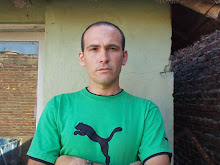Most sedentary human societies, we have left evidence of representations murals.
We see that for centuries, the execution of works are mural was refined, making it all a discipline whose intention was to "convey objectively" by the use of figurative images, with varying degrees of realism, in which messages could be understood by all castes or social classes.
To objectively communicate the muralists developed standards for designing the image where you not only worked in the graphic, but also studying ways to reach the viewer through the pictorial, and a higher degree in architectural development.

The muralists knew that a mural, which took place in a human habitat, must have a physical relationship with it.
In addition it was verifiable and is simply that a mural can be more expressive when it harmonizes with the architectural lines of the site.
On the image there are hundreds of examples that show the importance of making representations on murals full-length figures. We can establish a physical connection difference image viewer, if painted, but cut them.
The features listed above are the ABC's current and historical murals.
I emphasize that the entire human figures, it is very common to see works of "muralists misnamed" that portray the characters in his works from the waist up, seeming to envisage that these were buried in soil or observed through a window, not realizing that this relationship is lost physical character-spectator quoted above.

This is because many artists easel, applying its mode of writing in a great wall, hide behind the freedom to paint whatever you want, freedom legacy of modern art and choose the easy way to do without knowing.
In most cases this is achieved so blank wall.
I think it is necessary to establish the meaning of the word mural.
"The mural is a way of thinking that consists of the completion of the mural.". This thinking beyond the social objectives that can search (historical murals, custom, allegorical, protest, ecology, etc..) In order to manifest itself more expressive, bases its way of thinking about modes of representation image widely studied by muralists of all ages.
Of course, this involves knowledge of multiple disciplines involved in making the mural.
While one can say that there were differences among muralists regarding the design of the mural, in general terms there are more matches. What is important about these cases is that the artists who turn to murals to be ask these coincidences and experience.

Here I quote some features of the mural representation:
* The works are performed for a given wall.
* There is the constant presence of the human figure (being located in a human world and be a humanist discipline).
* The human figure is not rendered in flat but full-length cut and viewed from different points.
* The size of the main human figures of the composition are as great as the height of a normal person (no small figures of monumentality and lose physical relationship with the observer) (not to be confused with gigantism monumentality).
* Sizes are exaggerated physical features involved in the action (hands working, marching feet, etc).
* The composition of the mural is linked to the vision of the viewer, who may be mobile or static depending on the character of the site.
* No organization is used as Renaissance perspective space (as the use of it destroys the architecture of the site which is itself a work of art).

* The type of representation is figurative.
* The meaning of the work is understood by all social classes.
* Works for having worked with the architectural lines of the place are for a particular site.
* The organization of space used poly muralism angularity, ie, multiple points of view obtained from the study of the physical path of the viewer by.
* The content of the work is closely related to geographic location, people and history.
* The content of the work reflects the interests of viewers and not the artist.
* We seek a moral-aesthetic purpose in conducting a mural.
* Plate is used as a tool for change and reflection.

* The mural decorates no, you spell the man.
RETURN TO TITLE:
The artist turns to the wall is with a whole world to discover, he understands that it is an arduous task of representing a mural.
You are leaving the comfort of your workshop, consider points of view, up and down hundreds of times scaffolds and ladders. This often ends up depleting the artist and decides to work as quickly as possible without having so many things into account.
The favorite excuse is that everything is art, that any property of the image says something, it is not necessary that the message is objective, that if the image is cut communicates well, and an endless list of excuses that go perfectly well together one thing "the technical facility.
This kind of idea of designing a mural is a large majority today and brings the problem that all knowledge inherited from the great muralists (painting techniques, composition polyangular, architectural lines of the mural, viewer-character relationship, etc..) Are literally ignored or dismissed with facile excuse.
We should also mention the rejection of high durability techniques such as the cool, the glazed ceramics, encaustic, reliefs etc., Which are now supplanted by highly perishable materials.
Yesterday it appears that the mural should be like a book, which he stated his story to many generations. Today, the mural is like a book whose pages are rotting in 6 or 7 years by the use of ephemeral materials. End up being a photograph.
To prevent this, most needed only one thing "the knowledge of the discipline mural mural material support."

I think it would be good for pondering.

No comments:
Post a Comment